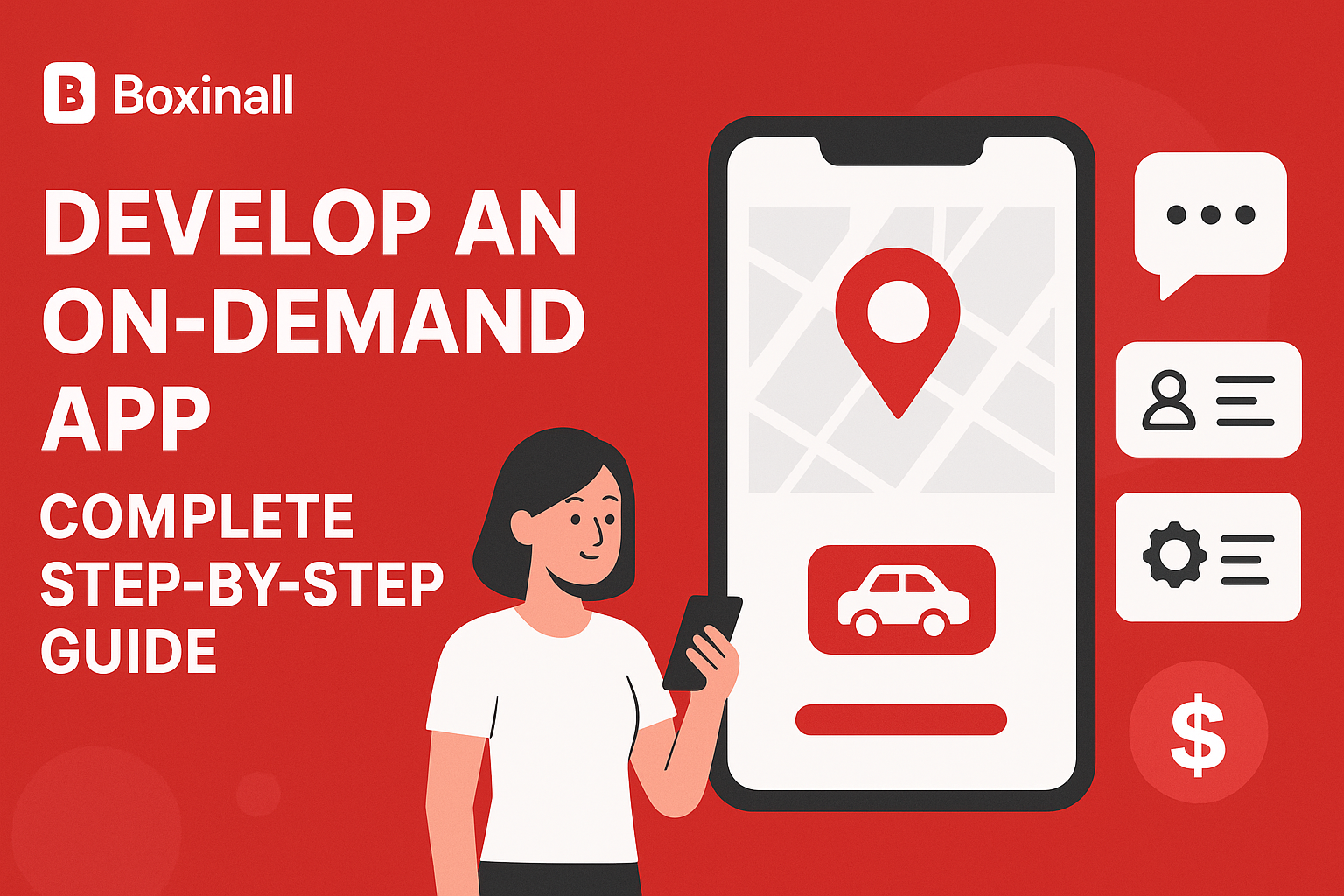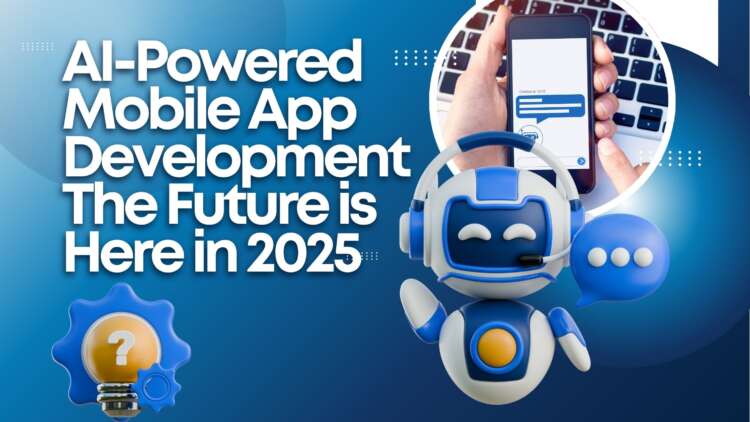The rise of the on-demand economy has transformed how we live, work, and connect. From booking a cab to ordering food or scheduling a home service, on-demand apps have become an integral part of everyday life. Businesses worldwide are leveraging this trend to reach customers instantly and generate consistent revenue.
If you’re planning to develop an on-demand app for your startup or enterprise, this step-by-step guide will help you understand everything — from research and planning to development, launch, and monetization.
What Is an On-Demand App?
An on-demand app connects service providers with end-users in real time. It allows users to request products or services instantly through a mobile or web application. Popular examples include Uber, Zomato, Swiggy, Airbnb, and UrbanClap.
These apps thrive on instant gratification, real-time tracking, and seamless payment experiences — key factors that have made them a dominant business model in multiple industries.
Step 1: Research and Market Validation
Before jumping into development, start with extensive market research and idea validation.
Key Steps:
- Identify a real-world problem your app will solve.
- Analyze competitors to find gaps in features or service quality.
- Understand your target audience — their habits, pain points, and preferences.
- Conduct surveys or interviews to validate your idea before investing in full-scale development.
Pro Tip: Focus on a niche where demand is high but supply or quality is lacking. This gives your app a strong market entry advantage.
Step 2: Define Core Features and Functionality
Once you’ve validated your idea, define what your app will include. Successful on-demand apps are built around user convenience, speed, and trust.
Essential Features for an On-Demand App:
- User Registration & Profiles – Secure signup via email, phone, or social media.
- Service Search & Filters – Easy browsing with smart filtering options.
- Real-Time Tracking – GPS-based live tracking for deliveries or services.
- Secure Payments – Integration with multiple payment gateways (credit/debit, wallets, UPI, etc.).
- Push Notifications – Keep users updated with status alerts and promotions.
- In-App Chat & Support – Direct communication between users and providers.
- Ratings & Reviews – Build credibility through customer feedback.
- AI-Driven Recommendations – Personalize user experience using behavioral insights.
- Admin Dashboard – Monitor performance, manage users, and analyze data.
These features form the foundation of user engagement and retention, ensuring users come back for more.
Step 3: Choose the Right Technology Stack
The success of your on-demand app depends largely on its tech stack — the backbone that ensures performance, scalability, and security.
Recommended Tech Stack:
- Frontend: React Native, Flutter, or Swift (iOS), Kotlin (Android)
- Backend: Node.js, Django, or Laravel
- Database: PostgreSQL, MongoDB, or Firebase
- Cloud Services: AWS, Google Cloud, or Azure
- APIs: Google Maps, Twilio, Stripe, PayPal
Partnering with a trusted mobile app development company like Boxinall ensures that your app is built using the latest technologies, industry best practices, and secure frameworks.
Step 4: Design an Intuitive User Interface (UI/UX)
Design plays a crucial role in app success. A well-designed app enhances usability, engagement, and conversions.
Best Practices:
- Keep the UI clean, minimal, and responsive.
- Focus on fast navigation with fewer clicks to complete a task.
- Use consistent color schemes, typography, and icons.
- Test prototypes on multiple devices to ensure smooth user experience.
At Boxinall, we believe great design isn’t just about looks — it’s about creating an experience that feels effortless for the user.
Step 5: Develop an MVP (Minimum Viable Product)
Start with an MVP version — a simplified app that includes only essential features. This approach allows you to:
- Validate your concept in the market quickly.
- Gather real user feedback for improvements.
- Save time and development costs.
Once the MVP gains traction, you can scale with advanced features like AI chatbots, analytics dashboards, or multiple language support.
Step 6: Test Thoroughly Before Launch
Quality assurance (QA) is vital before releasing your app to the public. Testing helps eliminate bugs, performance issues, and crashes.
Types of Testing:
- Functional Testing – Ensure all features work properly.
- Performance Testing – Check speed, scalability, and load time.
- Security Testing – Verify data protection and secure payment processing.
- Usability Testing – Evaluate the user experience on various devices.
Step 7: Launch and Market Your App
Once your app is tested and refined, it’s time to launch. Submit your app to Google Play Store and Apple App Store, then plan a marketing campaign to attract users.
Effective Marketing Channels:
- Social media and influencer marketing
- App Store Optimization (ASO)
- Paid ads on Google and Meta
- Email and content marketing
- Referral and reward programs
Step 8: Monetization Strategies for On-Demand Apps
There are multiple ways to generate revenue while keeping users satisfied.
Popular Monetization Models:
- Commission-Based System – Earn a percentage per transaction.
- Subscription Plans – Offer premium features for paid members.
- In-App Advertising – Promote relevant products or services.
- Surge Pricing – Charge higher rates during peak hours.
- Featured Listings – Let service providers pay for better visibility.
A smart monetization strategy ensures consistent revenue and long-term sustainability.
Step 9: Scale Your App for Future Growth
As your app gains popularity, design for scalability. This allows your business to expand to new regions, add new services, and serve larger audiences without performance issues.
Integrating advanced analytics, AI-driven personalization, and cloud scalability helps maintain top-tier performance even during peak traffic.
Why Partner with Boxinall for On-Demand App Development?
Boxinall specializes in end-to-end on-demand app development solutions — from strategy and UI design to deployment and maintenance. Our expert team ensures your app is fast, secure, and built for growth.
We combine innovation, user-centric design, and robust technology to deliver scalable and feature-rich apps that help businesses succeed in the competitive on-demand market.
Key Takeaways
- Start with research and validation to identify real user needs and market gaps.
- Include essential features like registration, tracking, secure payments, chat, and ratings.
- Focus on design and scalability to ensure smooth performance.
- Adopt effective monetization models such as commissions and subscriptions.
- Collaborate with a trusted development partner like Boxinall for quality and innovation.
Final Thoughts
Developing an on-demand app requires a clear strategy, the right technology, and an experienced team. With proper planning, a scalable architecture, and customer-focused design, your app can become the next big success story in the on-demand economy.
Whether you’re a startup or an enterprise, Boxinall can help you transform your idea into a high-performing, user-loved on-demand mobile application.



